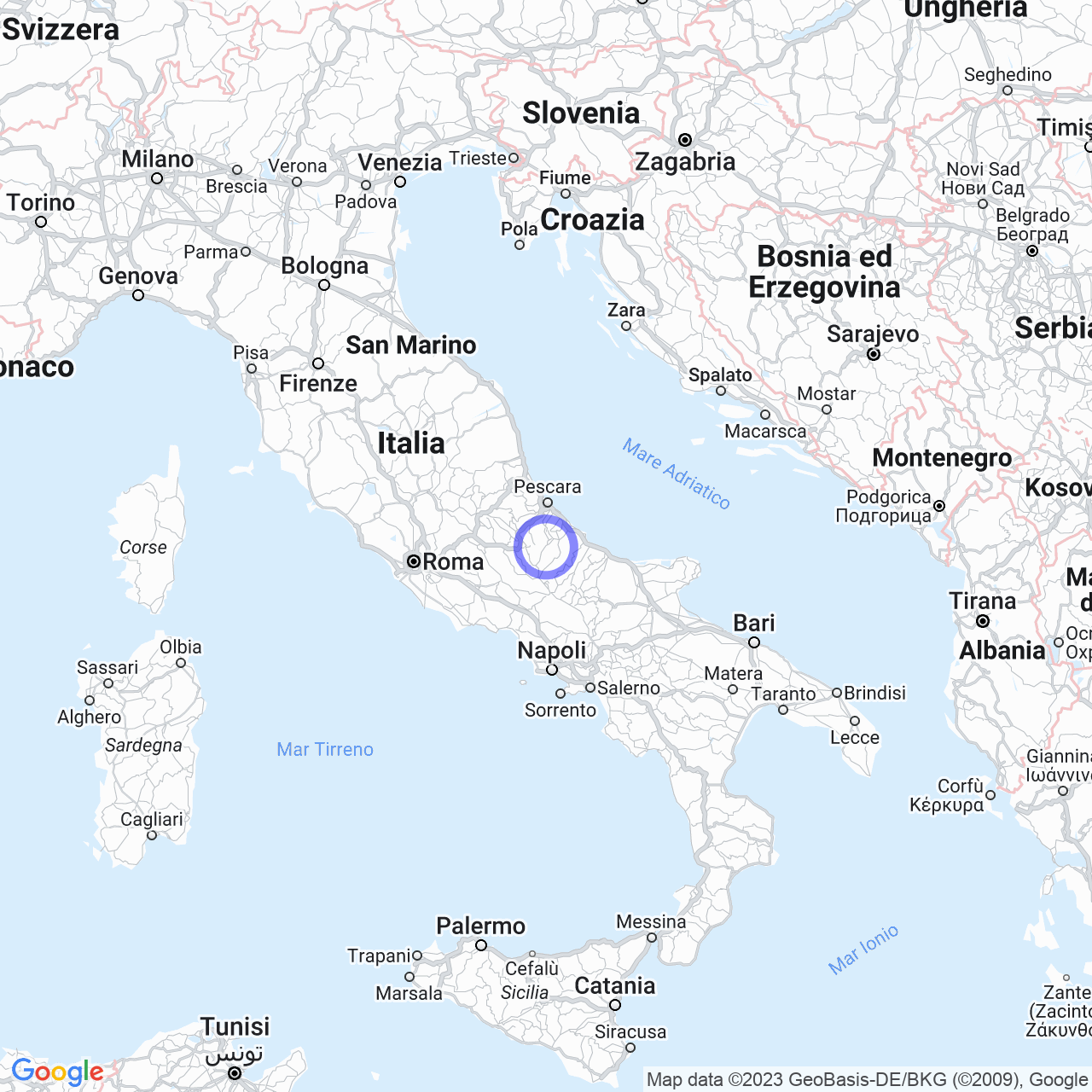Lama dei Peligni
Welcome to Lama dei Peligni, the land of Abruzzo Chamois!
Lama dei Peligni is a municipality located in the province of Chieti, in Abruzzo. With a population of around 1079 inhabitants, the town is part of the Aventino-Medio Sangro Mountain Community and is located within the Maiella National Park. Known as "the land of Abruzzo Chamois," Lama dei Peligni is situated in a particularly interesting florofaunal area.
Physical geography
Lama dei Peligni is located at an altitude of 669 meters, between the southern slopes of the Maiella massif and the Aventino river. Over the years, various bridges have been built to connect the two banks of the river. Among these, the Iron Bridge is the only one still standing and, as the name suggests, was built using wooden pieces used for the construction of rails. The environment of Lama dei Peligni is very varied, with vast oak forests, steep rocky slopes inhabited by squirrels, wild boars, and deer, and wide flat areas where the Leontopodium grows, for example.

Origin of the name
The name Lama dei Peligni derives from the pre-Latin term "lama," which means "ground where water stagnates." The addition of the suffix "Peligni" refers to the Italic people of the Peligni who inhabited the Aventino river area, although this theory is debated. Some argue that the Peligni were originally from the Sulmona valley and never lived in this area. Alternatively, the name of the town may have been inspired by the shape of the mountain, resembling a knife blade.
History
The territory of Lama dei Peligni has been inhabited since ancient times, as evidenced by the numerous rock paintings discovered in the caves of the area and the remains of a Neolithic village. During the Roman era, the area was inhabited by the Carecini, a people of Sannitic origin who lived in the inhabited centers of Cluviae and Juvanum. In the medieval period, the area was characterized by the presence of hermitages, where ascetics and saints lived. Among these, the Roberto da Salle stands out, disciple of Pope Celestine V, who stayed in the Grotta Sant'Angelo in Lama dei Peligni.
During the Renaissance, the town experienced significant development in wool production. However, Lama dei Peligni was completely destroyed by violent earthquakes and during World War II. The town became part of the Maiella Brigade and was liberated from the Germans on January 31, 1944.
Symbols
The municipal coat of arms and banner of Lama dei Peligni were granted by decree of the president of the Republic on June 25, 1981. The emblem represents a knife blade, a symbol of the shape of the mountain, and a chamois, a symbol of local fauna.
Conclusion
Lama dei Peligni is a town rich in history and tradition, immersed in an unspoiled nature. Visiting the Iron Bridge and the Cavallone Cave, the highest natural cave in Europe, are just some of the attractions the town has to offer. Moreover, you can admire the beauty of local fauna, such as chamois that have given the town its famous reputation in the past. Come discover Lama dei Peligni and share with us its history and natural beauty!
